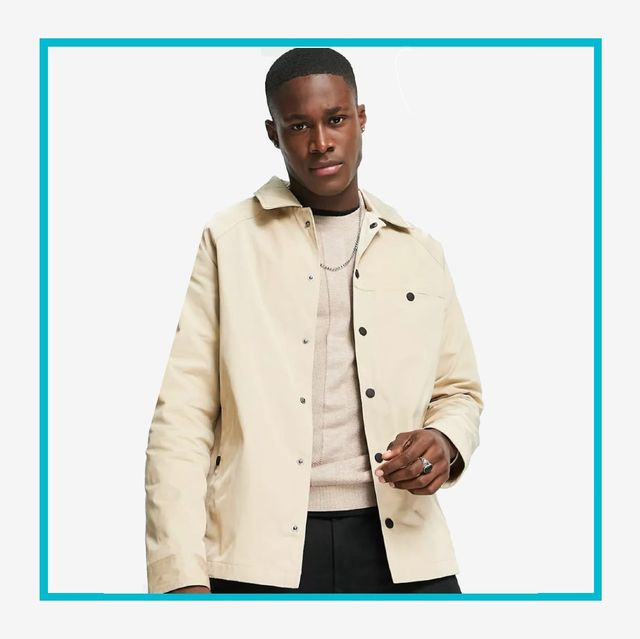The Importance of Lasting Apparel: Just How It Influences the Setting and Your Wardrobe
Sustainable clothing is increasingly identified for its vital role in lessening the ecological effect of the fast garment industry. By concentrating on environment-friendly products and ethical manufacturing techniques, it deals with pushing environmental issues. This change not only benefits the earth but likewise affects consumer choices, leading to a much more thoughtful method to closet administration. Understanding these characteristics increases vital questions regarding fashion's future and individual responsibility in forming it.
The Environmental Footprint of Fast Fashion

Advantages of Lasting Products
Lasting materials provide significant advantages, specifically with green material choices that lessen environmental injury. These materials also show durability and longevity, lowering the demand for regular replacements. Because of this, they add to a much more sustainable fashion business and advertise accountable consumer habits.
Eco-Friendly Textile Choices
While the fashion business has long been connected with quick patterns and ecological injury, the increase of environmentally friendly textile choices presents a transformative opportunity. Lasting products such as organic cotton, hemp, and Tencel have actually gotten popularity because of their lower environmental effect. These textiles are frequently generated without damaging pesticides and need less water, minimizing their carbon impact - Branded Clothing. In addition, many eco-friendly textiles are biodegradable, adding to a round economic situation by reducing waste. Picking sustainable materials not only sustains environmentally responsible practices however also promotes much healthier communities. As customers become a lot more familiar with their purchasing power, the need for green textiles encourages brands to innovate and take on even more sustainable production methods, eventually profiting the earth and future generations
Durability and Durability Benefits
Lots of customers are increasingly recognizing the resilience and long life benefits of lasting products in their apparel selections. Unlike standard fabrics, sustainable materials such as organic cotton, hemp, and recycled polyester are engineered to stand up to damage, causing garments that last much longer. This reduced frequency of substitute not just saves consumers cash with time yet likewise reduces waste produced by quick style. Furthermore, lasting apparel often uses environmentally friendly production methods that boost fabric strength, adding to a reduction in the total carbon impact. By purchasing long lasting garments, consumers can cultivate an extra sustainable closet while delighting in high-grade items that preserve their aesthetic and capability over time. Consequently, durability and long life stand as vital advantages of selecting sustainable materials.
Decreasing Waste Via Lasting Practices
Decreasing waste in the garment industry can be accomplished through ingenious practices such as upcycling and repurposing products. Furthermore, embracing minimal wardrobe techniques urges consumers to focus on high quality over amount, eventually lowering garments consumption. With each other, these methods add significantly to a much more lasting apparel version.
Upcycling and Repurposing Materials
Upcycling and repurposing materials have actually become cutting-edge techniques in the style industry, transforming disposed of fabrics into beneficial new products. This method not just minimizes waste but additionally urges imagination and originality in clothing layout. By taking old garments and materials, designers can produce unique pieces that show individual design while minimizing the need for new resources. Furthermore, upcycling commonly requires less energy and water contrasted to typical manufacturing processes, considerably decreasing the environmental impact of style. As customers become much more mindful of sustainability, the appeal of upcycled apparel proceeds to rise, advertising a circular economic situation. Ultimately, these practices contribute to a more sustainable future, where style focuses on environmental health over fast manufacturing and consumption.

Minimal Closet Techniques
As individuals increasingly look for to decrease their ecological effect, embracing minimalist closet strategies has actually acquired traction as an effective approach to lasting style. These strategies stress top quality over amount, encouraging consumers to curate a smaller sized collection of functional, long lasting garments. By concentrating on classic items that can be blended and matched, individuals can reduce the regularity of purchases and ultimately decrease waste.Additionally, minimalism advertises mindful consumption, prompting customers to show on the honest and environmental effects of their options. This method not only promotes a more lasting way of life but likewise simplifies day-to-day decision-making relating to clothes. As people embrace minimalist concepts, they add to a fashion society that values sustainability and liable consumerism, inevitably leading to an extra eco-conscious society.
The Duty of Honest Labor in Lasting Fashion
While several consumers are progressively familiar with the ecological consequences of their garments choices, the relevance of moral labor methods in sustainable fashion can not be forgotten. Ethical labor incorporates fair earnings, secure working conditions, and regard for employees' civil liberties, forming the foundation of responsible fashion manufacturing. Brand names that prioritize honest labor not just uplift neighborhoods but likewise established a criterion for accountability in the industry.Moreover, the combination of moral practices fosters transparency, allowing customers to make enlightened selections concerning their purchases. This method contrasts dramatically with rapid style's exploitative labor models, which frequently focus on earnings over individuals. By sustaining business dedicated to moral labor, customers add to a system that values human self-respect together with environmental sustainability. Subsequently, ethical labor is not simply an add-on; it is vital to the broader mission of sustainable style, ensuring that the quest for eco-friendliness does not come at find out this here the expense of human rights.
The Impact of Lasting Apparel on Carbon Emissions
Lasting garments has the potential to significantly reduce carbon discharges connected with the fashion business. Traditional garment manufacturing adds notably to greenhouse gas exhausts, primarily because of energy-intensive manufacturing procedures and using non-renewable resources. On the other hand, sustainable style concentrates on eco-friendly products, such as organic cotton or recycled fibers, which typically require much less energy to produce.Moreover, lasting brands have a tendency to adopt more reliable production methods, reducing waste and decreasing overall exhausts. By prioritizing resilience and classic design, lasting apparel urges customers to purchase less often, further lowering the carbon impact linked with overconsumption.Additionally, numerous lasting brands are dedicated to openness in their supply chains, enabling consumers to make educated selections that align with their worths. Ultimately, moving in the direction of lasting clothes can bring about a significant decrease in carbon exhausts, contributing to a healthier planet and a more sustainable future for the apparel industry.
Supporting Neighborhood Economic Climates With Lasting Selections
The change toward lasting clothing not just addresses ecological issues however additionally substantially benefits local economic situations. By choosing sustainable fashion, consumers commonly sustain little businesses and neighborhood artisans, boosting neighborhood resilience. These enterprises generally operate on a smaller scale, prioritizing craftsmanship and ethical methods over mass production.Investing in locally made sustainable clothes cultivates task development and promotes financial growth within communities. As consumers end up being more familiar with the ecological impact of their purchases, they progressively look for out items that show their worths. This demand encourages local producers to adopt lasting techniques, adding to a circular economy.Moreover, supporting neighborhood businesses reduces transport exhausts, lining up with eco-conscious consumer actions. The interconnectedness of lasting clothes and local economic climates emphasizes the crucial function that private choices play in advertising both ecological and economic health. By fostering these local links, neighborhoods can thrive while additionally functioning towards an extra sustainable future.
Transforming Your Storage Room: Tips for a Sustainable Closet
As individuals look for to decrease their ecological impact, changing a closet right into a sustainable closet becomes a vital step. One reliable technique is to review existing garments, keeping just items that are used frequently which align with sustainability goals. Focusing on quality over quantity is vital; purchasing long lasting items from environmentally friendly brands can greatly decrease waste.Additionally, integrating second-hand products can rejuvenate a closet while decreasing environmental damage. Organizing garments swaps with buddies or contributing extra things can navigate to this website further promote sustainability.When buying, people ought to look for products that are natural, recycled, or eco-friendly, and avoid fast fashion stores - Branded Clothing. Finally, practicing conscious consumption by thoughtfully taking into consideration each acquisition can add to a much more lasting way of living. By executing these suggestions, one can create a wardrobe that reflects personal style while sustaining ecological stewardship
Often Asked Questions
Just How Can I Recognize Sustainable Apparel Brands?
To identify lasting clothes brands, one need to investigate products made use of, look for certifications like Fair Trade, and examine the brand's openness regarding their manufacturing processes, labor techniques, and ecological influence, making certain moral and eco-friendly methods are prioritized.
What Are the Prices Connected With Sustainable Style?
The expenses connected with lasting fashion can vary considerably. Higher manufacturing costs, honest sourcing, and environmentally friendly materials frequently result in increased list prices, which may deter some customers while attracting ecologically conscious buyers.
Can Lasting Garments Be Stylish and Trendy?
Lasting apparel can certainly be stylish and fashionable. Designers increasingly focus on innovative products and moral manufacturing methods, confirming that fashion and sustainability can coexist. Consumers currently have diverse choices that mix aesthetics with ecological awareness.
How Does Laundering Garments Affect Their Sustainability?
Cleaning clothes greatly impacts sustainability by consuming water and power, adding to pollution, and triggering microplastic launch. Frequent washing can break down textiles, reducing their life expectancy and boosting the requirement for substitutes, inevitably intensifying environmental problems.
What Is the Life-span of Sustainable Clothes Contrasted to Quick Style?
The life-span of lasting clothing typically surpasses that of quick fashion products, often enduring a number of years as a result of top quality products and workmanship. On the other hand, fast fashion garments may degrade quickly, necessitating even more constant substitutes. Sustainable garments is progressively identified for its critical function in lessening the environmental influence of the rapid style industry. While lots of consumers are increasingly mindful of the ecological effects of their apparel choices, the importance of honest labor techniques in lasting style can not be overlooked. Branded Clothing. Lasting apparel has the prospective to substantially lower carbon exhausts associated with the style industry. In contrast, you can try these out lasting style concentrates on eco-friendly materials, such as organic cotton or recycled fibers, which commonly require less power to produce.Moreover, lasting brands often tend to take on more efficient manufacturing practices, reducing waste and decreasing overall discharges. By focusing on longevity and timeless style, sustainable apparel encourages customers to buy much less often, additional minimizing the carbon impact associated with overconsumption.Additionally, several sustainable brands are devoted to transparency in their supply chains, enabling consumers to make informed options that align with their values